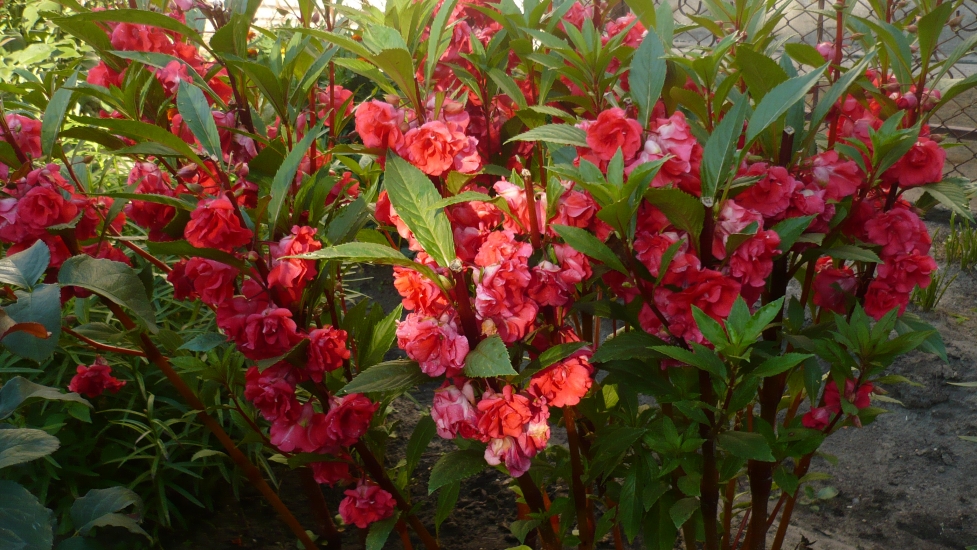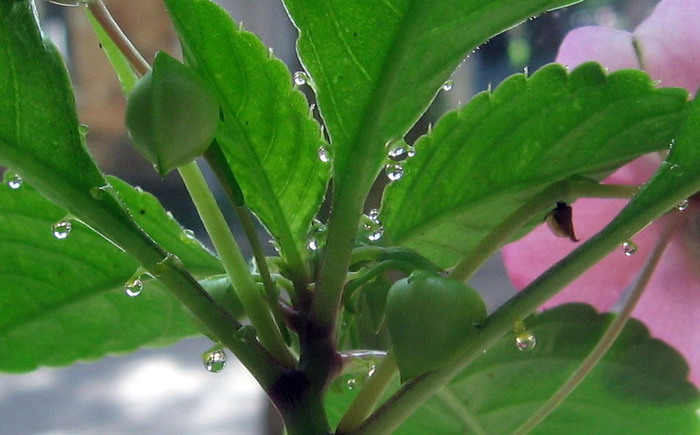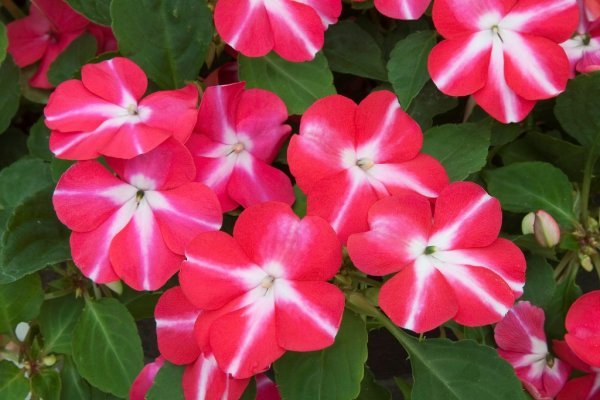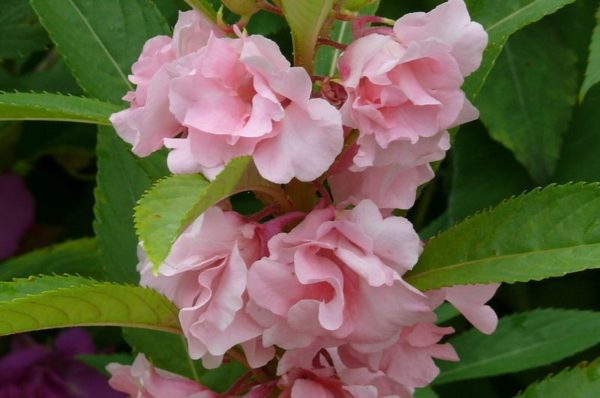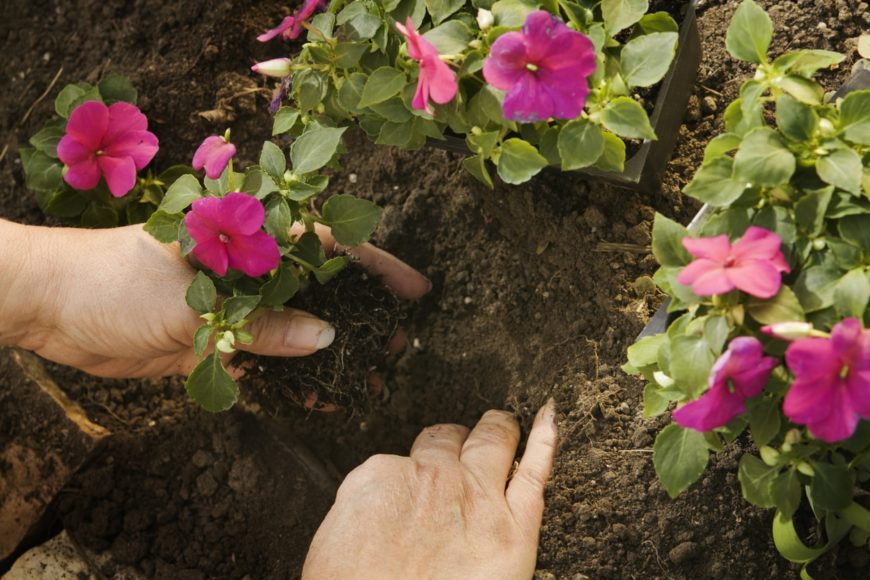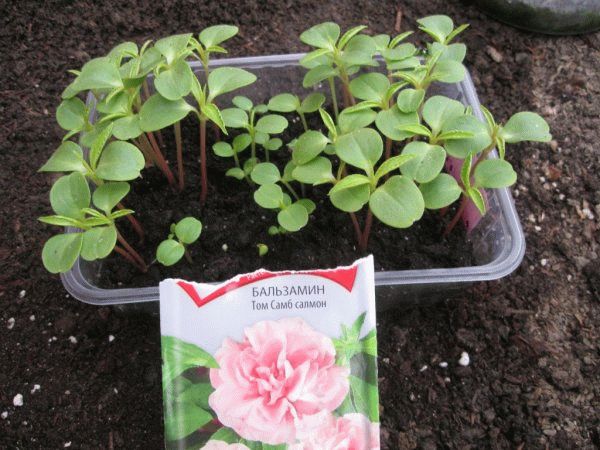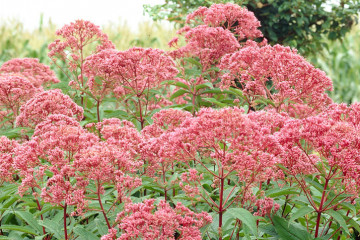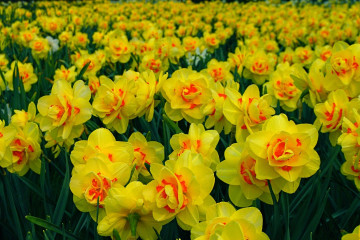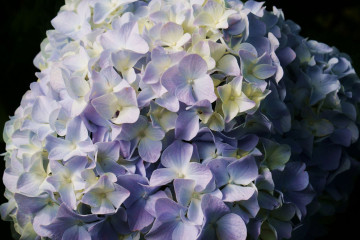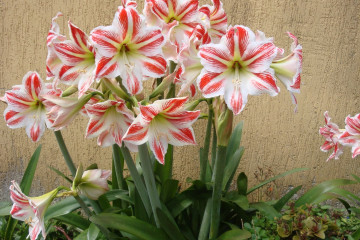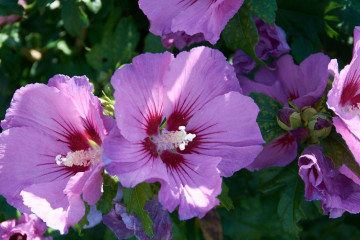Garden balsam - planting and care in the open field
Content:
Beautiful and long flowering, undemanding soil on the site, unpretentious care and vitality - these are the reasons why gardeners choose balsam for their beds. Like any culture, garden balsam has features in planting and care, reproduction, feeding. To achieve lush flowering, you need to know them.
The origin and appearance of garden balsams
Garden balsam belongs to the Balsamin family, the genus Impatiens. From Latin this name is translated as “touchy, untouchable”. Ripe fruits of the plant open when touched, throwing out seeds within a radius of 2 meters.
The genus includes about 500 species. Such diversity and prevalence in many regions of the planet makes it difficult to accurately determine the homeland of the flower. Most often, balsams grow in tropical and temperate climates.
"Untouchable" plants were discovered in the 17th century. Their first descriptions date back to 1869 and relate to the varieties found in India and neighboring regions of Asia. Most of the species were discovered and classified in the 19th century, during the period of active study of corners of the planet remote from civilization. The last group to be discovered was a group of balsams from New Zealand. This only happened in 1989.
Continuously blooming balsams in Western countries are called Busy Lizzie, and in Russia the flower was nicknamed Vanka Wet. At first glance, it is not associated with a plant in any way. Such an unusual name is associated with an interesting feature: drops of sweet liquid are formed on the balsam leaves. Gradually they harden and turn into sugar balls.
Initially, in our climate, balsams were grown only at home. But thanks to breeding work, varieties for street keeping appeared. This is how the garden balsam arose. It is an annual plant, a shrub with fleshy, dense branches, trunk and leaves. They have one peculiarity: they are not flexible and break easily. The height of the bush in different varieties varies from 20 to 70 cm.
Balsam street differs from indoor "brothers":
| List of professions | Regulatory procedure for issuance |
| Builders | signal form; gloves; PPE for face and ears; vibration reducing agents |
| Drivers | mittens; warm suit; safety shoes |
| Movers | overalls; gloves; jackets; trousers. |
| Sales staff | kerchiefs; gloves; bathrobes |
| Agricultural employees | gloves; footwear; mittens. |
| Electrical workers | dielectric special gloves; safety footwear; headdress; upper overalls; thermal underwear for dielectrics. |
Description of balsam flowering
Buds and flowers form at the base of the leaves. Flowers come in different sizes and shapes, depending on the variety. The color of the petals is from white to dark burgundy. The most common are pink and purple. Hybrids can have double petals.
Outdoor flowering covers almost the entire growing season, from May to late September.
Types and varieties of balsam for outdoor cultivation
Most varieties of garden balsam are bred in Europe, they are not so numerous. Plants are different in color of flowers, structure, shape. There are specimens similar to camellias, roses, carnations.
Tom Tumb
Compact dense bushes with a height of 25 to 40 cm. The variety is distinguished by the variety of shades of petals and the duration of flowering. Flowers are double, in large quantities cover the bushes in June and remain, replacing each other until September. And if the air temperature permits, then Tom Tamb blooms until mid-October. Prefers slightly shaded areas, light fertile soils. In such conditions, it gives the most lush and abundant flowering. It's easy to look after him.
Iron-bearing balsam
The name "iron-bearing" is explained by the presence of special glands, dense joints, which are located at the base of the leaf plates. The annual shoots are smooth, reaching 50 cm in height. The leaves are bright green, oval, about 15 cm. The flowers are attached to long peduncles-brushes. Their color can be pink, bright red, wine shades.
Hawker's Balsam
The natural habitat of this species is New Guinea, Solomon Islands. It was discovered by botanists in 1884. Wild forms have not taken root as an ornamental culture on the European continent. However, on their basis, large-scale work was carried out to breed hybrid varieties.
A distinctive feature of Hawker's balsam is the large flowers of a beautiful purple hue with a whitish core. The leaves are elliptical, green, with beige veins.
Large-flowered balsam
The homeland of the species is Sri Lanka. Valued by gardeners, it is gaining more and more popularity due to its large flowers. Their diameter reaches 6 cm. And the color is different: white, pink, deep red, salmon, purple. Varieties with a two-color color have also been bred. Due to the fact that new buds are constantly forming and blooming, the effect of long-term flowering occurs. It ends only with the onset of frost.
Bush-shaped plant, densely covered with foliage. Its height and diameter are about 30 cm. The leaf plates are dark green, with a jagged edge. They are practically hidden by a large number of flowers.
Balsam creeping
One of the shortest species. Miniature plants have an unusual color of the stems - reddish-brown. Against its background, the golden shade of the petals looks contrasting. In Russia, this plant is still very rare.
Balsamic touch-me-not
A well-known species native to Bengal. In this region, the plant is grown not so much for decorative purposes as as a seasoning for food. It is a herbaceous annual with a straight stem 25-45 cm high, lanceolate narrow leaf plates with a serrated edge.
The flowers are large, located on short pedicels, several in each leaf axil. The diameter of the flowers is about 3 cm, and the color is pink or purple-white. Some varieties have double petals.
Balsam Camellia
The Camellia variety got its name from the similarity of the shape of the flowers to real camellias. Their shades range from purple to pure white. The bush is covered with many leaves and flowers in pairs. Their size is about 5 cm.
The Camellia variety is very thermophilic, does not survive when temperatures drop. Before planting in open ground, germinate seedlings in good lighting conditions. Without light, plants give arrows. Flowering occurs at the end of June.
Balsam Carmelita
The stems of the Carmelita variety rise 70 cm above the ground. The plants have a pyramidal shape. The stems are fleshy, but fragile, break at knots, so they are protected from strong winds. The flowers are terry, up to 4 cm in size. Their shape is camellia, and the color is from purple to white. The first buds open in June. Blooming does not stop until September.
The variety is very thermophilic and responds to any temperature extremes. Seedlings are planted in open ground in late May - early June.
Balsam Fashionista
The highlight of the variety is the contrasting color. Its two-colored, hot pink and white terry camellia-shaped petals do not remain invisible in the flower bed. They bloom in the axils of each leaf. The plant itself is erect, 40-50 cm high. The color is very abundant. In order for the bush to acquire a beautiful shape, it is pinched.
The flower is photophilous and thermophilic, but it can grow in a small shade. Loves fertile light soil. It can stay fresh for a long time in the cut.
There are other types: Waller's balsam, New Guinea, terry, touch-me-not small-flowered.
Planting balsam seedlings in open ground
The best time for planting garden balsam in open ground is May. By this month, in most regions, the threat of spring frosts, which can destroy the seedlings, will have passed.
What is needed for landing
Before planting seedlings in open ground, you need to prepare the soil. Plants prefer loose, fertile, non-acidic soil.
The seedling holes should be the same size as the seedling containers, so that when planting, the root collars of the seedlings are not buried. A small amount of vermicompost is poured into the bottom of each hole.
The soil can be spilled with a fungicide in advance, fed with stale manure, and moistened.
Choosing the best place
Balsam needs protection from strong winds and direct sunlight, because of which it begins to wilt, curl leaves. Flowers are often planted along fences, near trees. They can also be successfully grown in garden boxes and pots.
Experienced growers have noticed that plants thrive best on the western and eastern sides of the site. On the flower beds, balsams are combined with any varieties. But the best neighbors for touchy are begonias, fuchsias, verbena.
Step-by-step planting process
To determine whether the plant will take root in the open field and whether it will develop quickly, it is removed from the container for germination and the condition of the root system is assessed, if the earthen lump is penetrated with white roots, the seedling is transplanted outside. Planting stages:
- Plants, together with an earthen lump, are laid out in holes.
- They are made at a distance of 25-30 cm from each other, since the garden balsam bushes grow rapidly.
- Sprinkle the soil, lightly press.
- Abundant watering is carried out.
Planting is mulched with sawdust. This prevents drying out of the soil and erosion of roots during irrigation, and also provides air access to the root system and retarding weed growth.
Reproduction of balsam
Balsams are easy to multiply. To create their own collections, gardeners not only stock up on seeds, but also share cuttings.Both methods give good results.
Propagation by cuttings
For harvesting cuttings, the longest shoots are chosen. The tops are cut off with a sharp knife or blade. The length of the cuttings should be 10-12 cm. The lower leaves are removed from them. Roots are subsequently formed on the bare nodes.
Growing from seeds
Seeds for germination are purchased in specialized stores or collected from decaying plants. This breeding method has several disadvantages:
- hybrids do not always inherit the properties of the parent specimens;
- seeds collected from unripe pods have low germination.
To grow a flower from seeds, the following soil compositions are suitable:
- perlite, compost, humus, turf in equal amounts;
- peat with sand, leaf land in proportions 1: 2.
Seeds for seedlings are sown in February - early March. Stages of work:
- The seeds are soaked in a weak solution of potassium permanganate for 10 minutes, then left in warm water for 30 minutes.
- The soil in the planting container is moistened.
- Seeds are sown at a distance of 4-5 mm. Sprinkle on top with a thin layer of sand.
- The container is covered with foil or glass to maintain moisture.
- Provide a temperature regime of + 24-260 C.
- Landings are aired daily. Seedlings are hardened so that the plants are resistant to disease.
- After the appearance of the first shoots, additional lighting is organized so that the shoots do not stretch out.
- Moisten the soil as needed.
- After the appearance of the third true leaf, the seedlings dive.
Caring for balsam in a flower bed
Many growers are happy to plant balsams on the plots, cultivation and care require a minimum of time. Care consists in regular watering and feeding.
Watering mode
Water the touchy plentifully. The stream of water is directed exactly under the bush so that moisture does not get on the buds and flowers. For irrigation, settled water is used.
Top dressing for lush flowering
Fertilizers are applied twice a week, along with watering. Young plants are fed with nitrogen compounds. They contribute to the growth of green mass. For lush flowering, mixtures with phosphorus and potassium are suitable. At the end of summer, feeding is stopped.
The bright flowering of balsams in the garden opens up ample opportunities for creating spectacular flower beds, borders, lawns, flowerpots. A variety of colors and shapes allows the annual to find a worthy use in the country.
